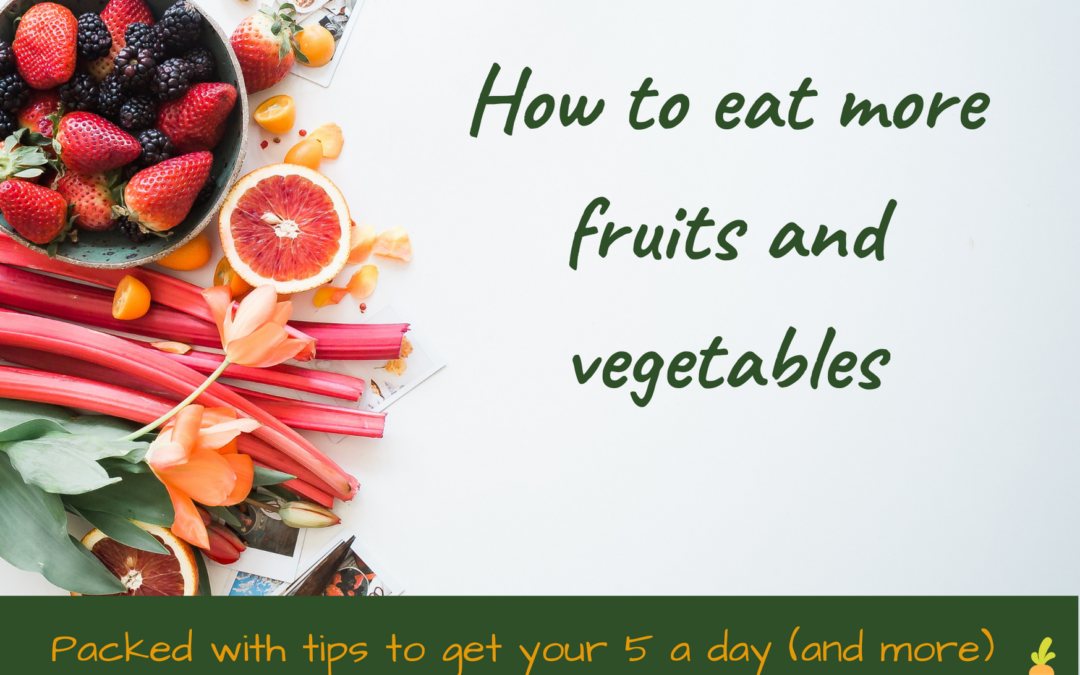One of the main ways to be more eco-friendly in your eating is to eat more fruit and vegetables, especially locally grown, packaging free ones.
So how do you go about doing this? Especially if you don’t really like vegetables!?
Oh, and a quick note about the whole ‘5 a day’ thing. It’s a guideline MINIMUM that we should be eating. So it’s not, get to five and stop because you’ve had enough. More is always better!
In the UK, we are advised to get at least 5 a day. America’s are advised to eat 1½ to 2 cups per day of fruit and 2 to 3 cups per day of vegetables. These are right at the low end…
Other countries like Australia recommend 7 a day (2 fruit and 5 veg). The science says that having a 10 a day is more what we should be aiming for, and people who consume this much have significantly lower levels of disease and sickness. So why does our government say 5? Simply because they fear that 10 would seem unachievable and therefore people wouldn’t even try! That’s how little fruit and veg we eat in this country – it’s no wonder rates of diseases are climbing!
Note that the Australians split out into 2 fruit and 5 vegetables because they don’t want people to just eat 7 portions of fruit. Fruit is good for you in terms of vitamins and minerals, but many are still very high in sugar, so should be eaten in moderation and ideally spread throughout the day.
So if we should be trying to eat pretty much as much fruit and veg as we can, how do we do this?
Ways to get more fruit and vegetables in your life
Let’s start with some generic bits about how to fit more fruits and vegetables into your life before getting into how you can start to like and eat veg in the first place!
Soups
A vegetable soup is a great way to pack in a load of veg. There are so many recipes out there that you’ll definitely find one that works for you. There’s always one you can do with seasonal veg, blending some beans in or adding in some form of yoghurt or coconut milk makes them more filling.
Yes, they seem like a lot of effort to prepare, especially if there’s only one of you, but they are great for batch prepping and freezing so just cook lots of it less often.
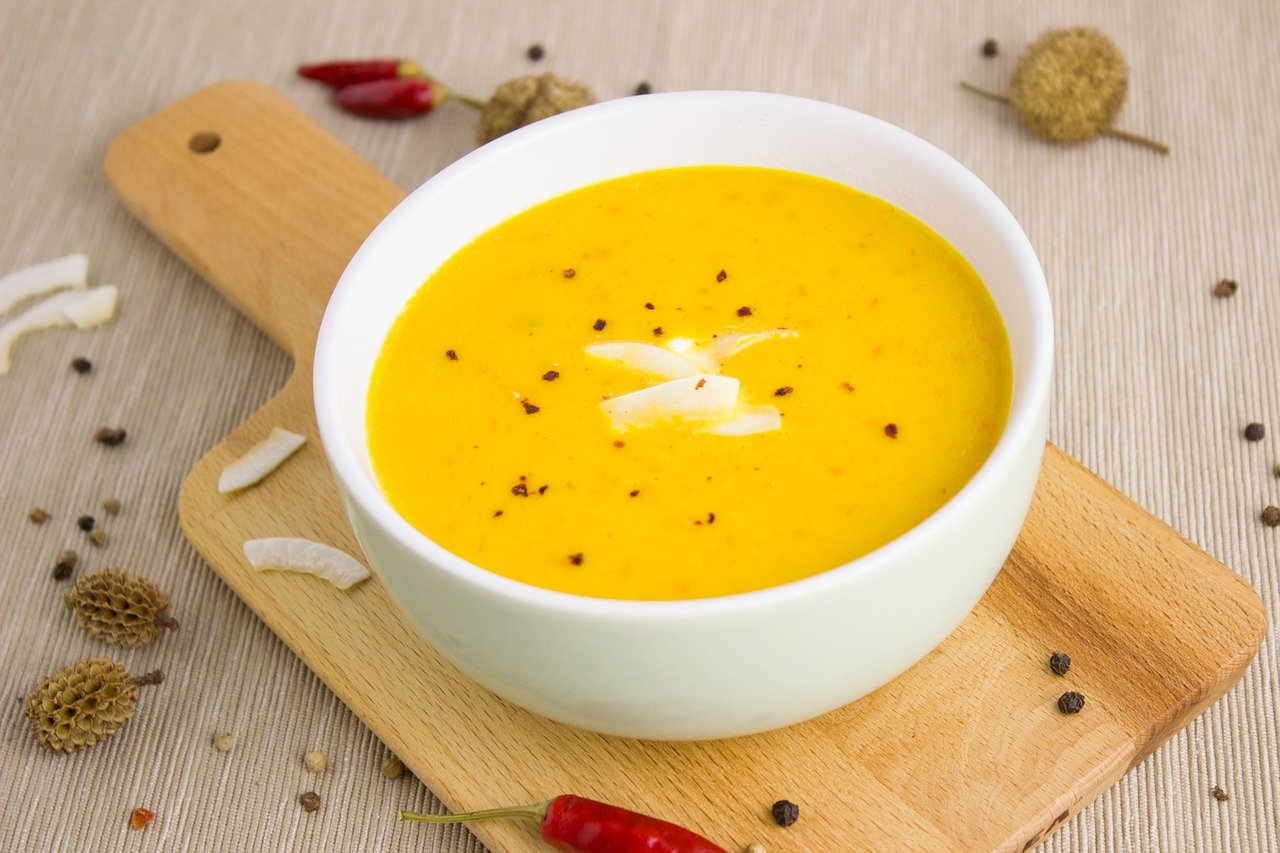
Don’t follow the recipe!
Many of the recipes out there don’t actually contain many veg at all. This really annoys me!! So I’m always looking at how I can add more vegetables into something.
In a light or thin sauce, adding extra veg can really change the dish up (which is either a good or bad thing depending on your attitude towards veg…). But if there’s a thick or flavoursome sauce, adding some extra veg won’t change it much, especially if you add the veg in in tiny bits…
Veg are very interchangeable. You can easily swap most green leafy veg around (spinach, kale, winter greens), pick something that looks broadly similar rather than getting hung up on getting exactly the vegetable the recipe requires. That way you can shop seasonally and pick the packaging free ones 😊.
Hide the vegetables
One of the better ways to get veg into someone who hates them, is to make it really small (as discussed above, this was one of my go to options when trying to make myself eat them).
Try grating vegetables in, or even blending them into a sauce.
Grated carrot actually sweetens a dish.
Grated courgette mushes down into pretty much nothing.
Salads
These have a reputation for being boring, but there are so many things you can put in a salad! I love the warm ones like roasted squash, chilli chickpeas and spinach.
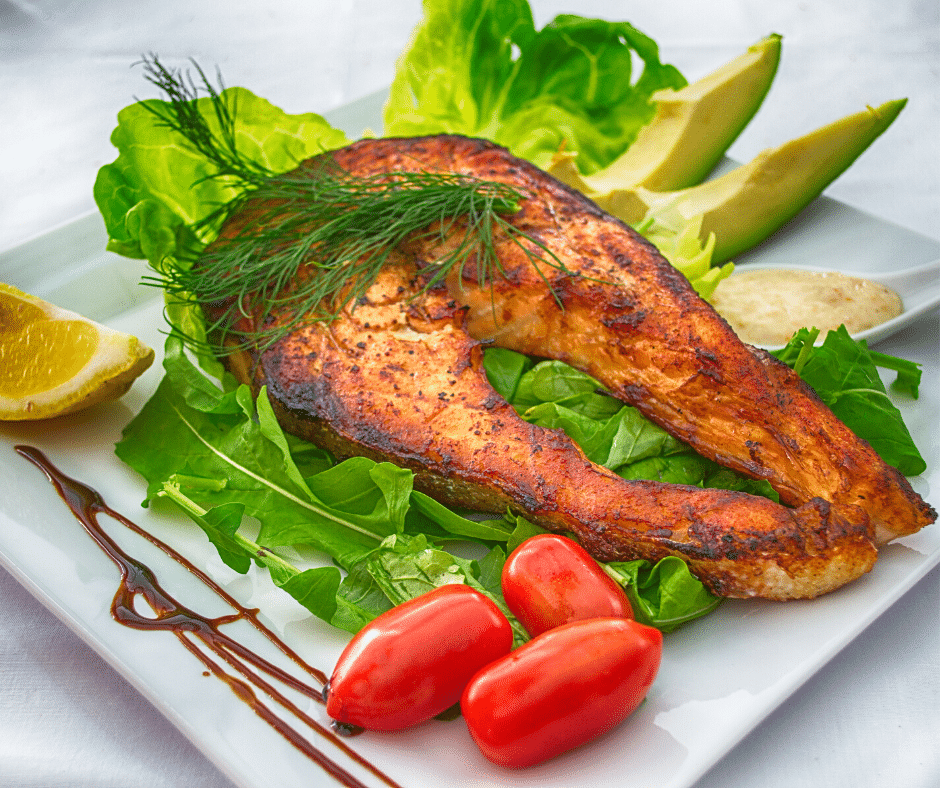
Courgette noodles or threads
It’s quite amazing what happens to veg when they go through a spiraliser! Sweet potato and courgette come out looking like pasta! Either add to a spaghetti dish for some semi hidden veg,or replace the pasta altogether!
If you don’t have a spiraliser, using your peeler to slice off thin slices can give a similar effect. Although they are more like linguine… These steam fry in a couple of minutes so are great for a quick dinner, or to add into a stir fry.
Rethink breakfast
I’ve talked about oatmeal, but there are so many other breakfast options!
Mini breakfast omelettes with vegetables in (onion, tomato, courgette, spinach, mushrooms etc).
Grilled mushrooms, tomatoes, eggs and potatoes.
We have some pretty set ideas about breakfast (in the UK certainly), and eating veg for breakfast seems very weird, yet we readily accept tomatoes and mushrooms as breakfast foods in our ‘Full English’, and will have potatoes in the form of hash browns. Open your breakfast world up to other vegetables!
Talking of hash, a potato or parsnip hash is great for breakfast or brunch.
Fruit for snacks
I still struggle with this one, but I’m a lot better than I used to be!
For some reason when I’m hungry, fruit never seems to come into my head. But when I do remember and eat an apple or orange instead of a biscuit, I always remember how much I love them – a good apple or orange really does taste better than most biscuits in my opinion. A rubbish apple or orange is pretty grim though… So experiment with different types to find one you like and prioritise fresh, quality fruit to make it taste better (it’s likely to be more nutritious too!).
If you can team a piece of fruit with some nuts or seeds, you’re sticking in a long term energy source that should keep you going for a few hours (unlike 20 minutes with a biscuit). Avoid the sugar rollercoaster!
Whilst this isn’t habit, and you still think of chocolate, cake or biscuits whenever you get peckish, hide these from view, and put the fruit in front of it. At least then you can consider the apple instead, rather than forgetting it’s even an option!
If you find yourself reaching for the cookie jar at 10.30, try and set yourself limits. Denying yourself something entirely often means that you end up wanting it more, but I’ve found that by limiting chocolate, biscuits and cake (high sugar foods) before lunch, I can put back the biscuit till later and have a piece of fruit in the morning. Part of this comes down to learning about the impact of foods on my blood sugar and why I’d want to keep my blood sugars stable.
My biggest reason for overlooking fruit for a snack is that I often get a sweet tooth after lunch.
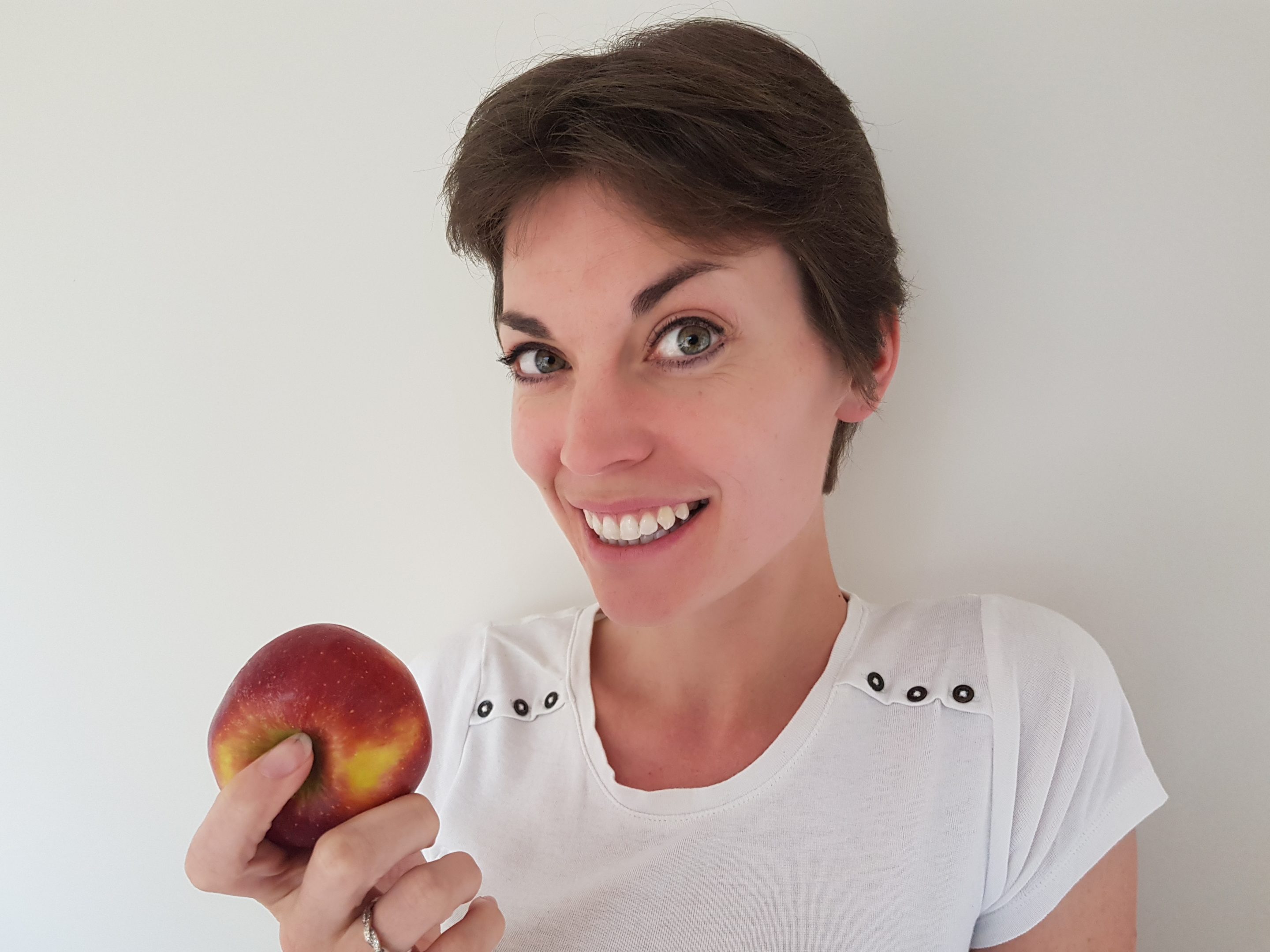
Try baking with vegetables or dried fruits in
My colleagues, friends and family always laugh at me because I try baking with veg in it. They only ever say they don’t like it AFTER they find out what’s in it though. Yet no-one laughs at carrot cake! It’s all about mindset.
Beetroot cake is deliciously earthy and has such a rich colour, banana breads don’t even need to be sweetened to be delicious – the ripe banana does that for you. Apple cakes are really nice, and I even love a sweet potato brownie, black bean cookies and courgette cakes. Don’t knock it until you’ve tried it!
Level 1 is just to use dates and sultanas/raisins instead of refined sugars. These still pack a massive sugar punch, but they do at least come as little vitamin and mineral parcels wrapped in fibre.
This Carrot and Courgette Cake recipe makes a filling and tasty loaf that’s great warm with a cup of tea.
Fruit with breakfast
As a population we generally reach for the cereals and grains. Yes, it’s very quick and convenient, but the sugar content is pretty high, even in ‘healthy’ cereals and we tend to have them with a whole heap of milk and very little fruit.
Porridge or oatmeal again has a reputation for being bland and boring. I think this is totally undeserved! In mine this morning for example, I had some leftover berry compote from our pancakes the day before, stewed apple, half a banana, crushed seeds and nuts, and sultanas. Delicious – and a fun purple colour! Other days I put in some cinnamon with apple or banana. In the summer I fill it with strawberries and other berries. Sweeten it with a dash of honey if you must in the beginning whilst your taste buds adapt from sweetened cereals.
A bowl only takes 2 mins to cook, so put it in whilst you’re getting everything else out, or sorting other things out in your morning, chuck in some fillings and voila.
If you have to stick with a cereal, try muesli with fruit and yoghurt (a non-sweetened kind preferably in a cardboard box). My son’s not a fan of porridge, but he loves muesli.
Try to get two portions of fruit (or veg – see further down) with your breakfast so you’re off to a winning start.
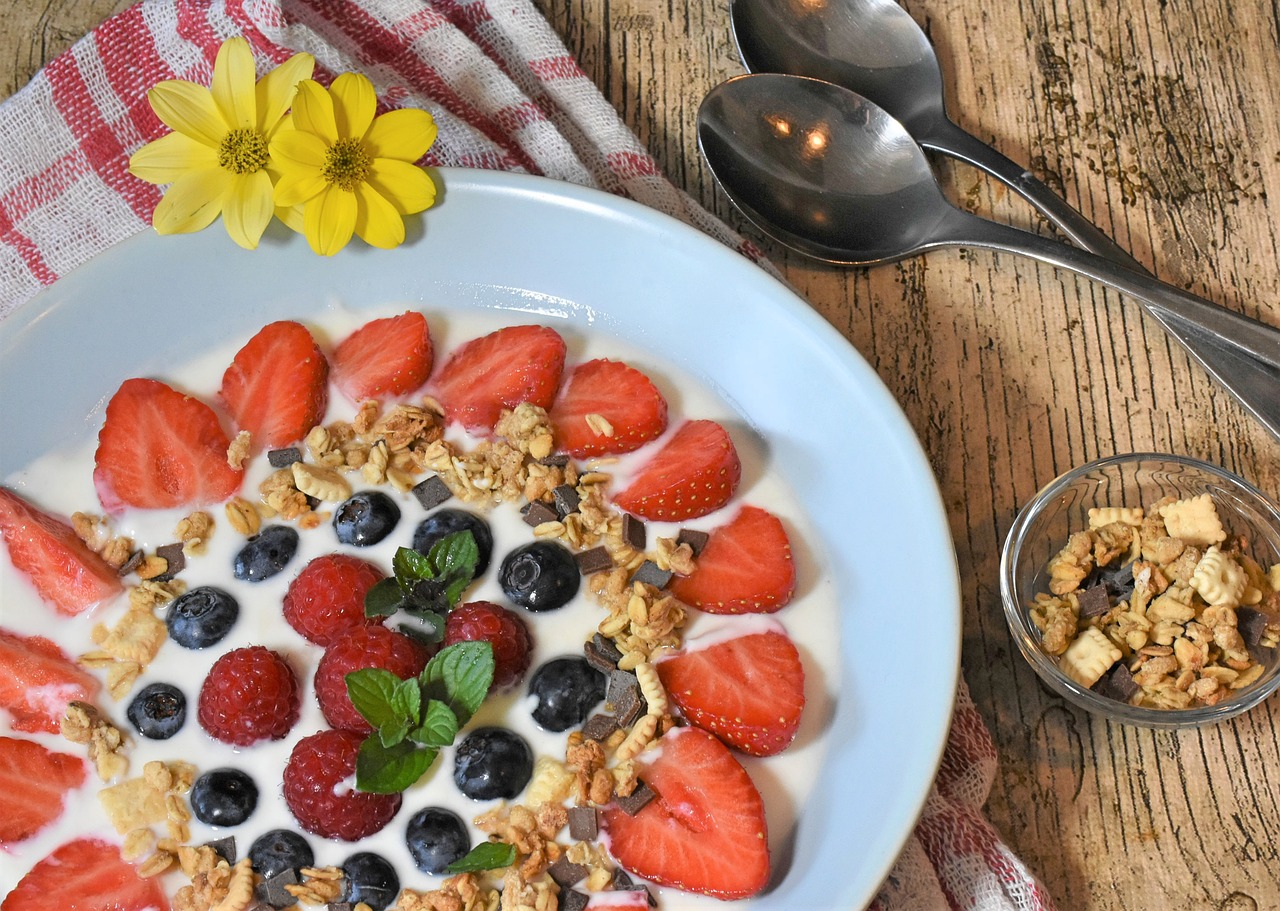
Change your way of building your plate
When you get into the habit of having vegetables or fruit with every meal, you’ll far exceed 5 a day. Have a couple in breakfast, snack on fruit, include a couple in lunch and then 3 with dinner. This will mean that over half of your plate should be vegetables at most meals!
Try cauliflower rice
Cooked in a bit of vegetable stock, this has a lovely flavour and looks a lot like couscous (less like rice). It’s really easy to make and you can eat piles of it without guilt. Use it as a side to a flavoursome sauce and it’ll absorb the flavour.
Before you get too judgemental about cauliflower. Does anyone actually like rice on its own? Not really, that’s why we have it with things with sauce!
Add a side salad
There are many meals, especially pastas and pizza that go really well with a side salad. Pick the bits you like best at the start (but do keep trying new ones). Lettuce, tomatoes and cucumber are the standards, but do try avocado too and spinach and the many other types of lettuce leaf. They have different flavours and textures so find one you like best.
We also add cherry tomatoes, spinach/lettuce and cucumber on the side of any sandwich we serve up to the kids so that they can get an extra portion of veg in.
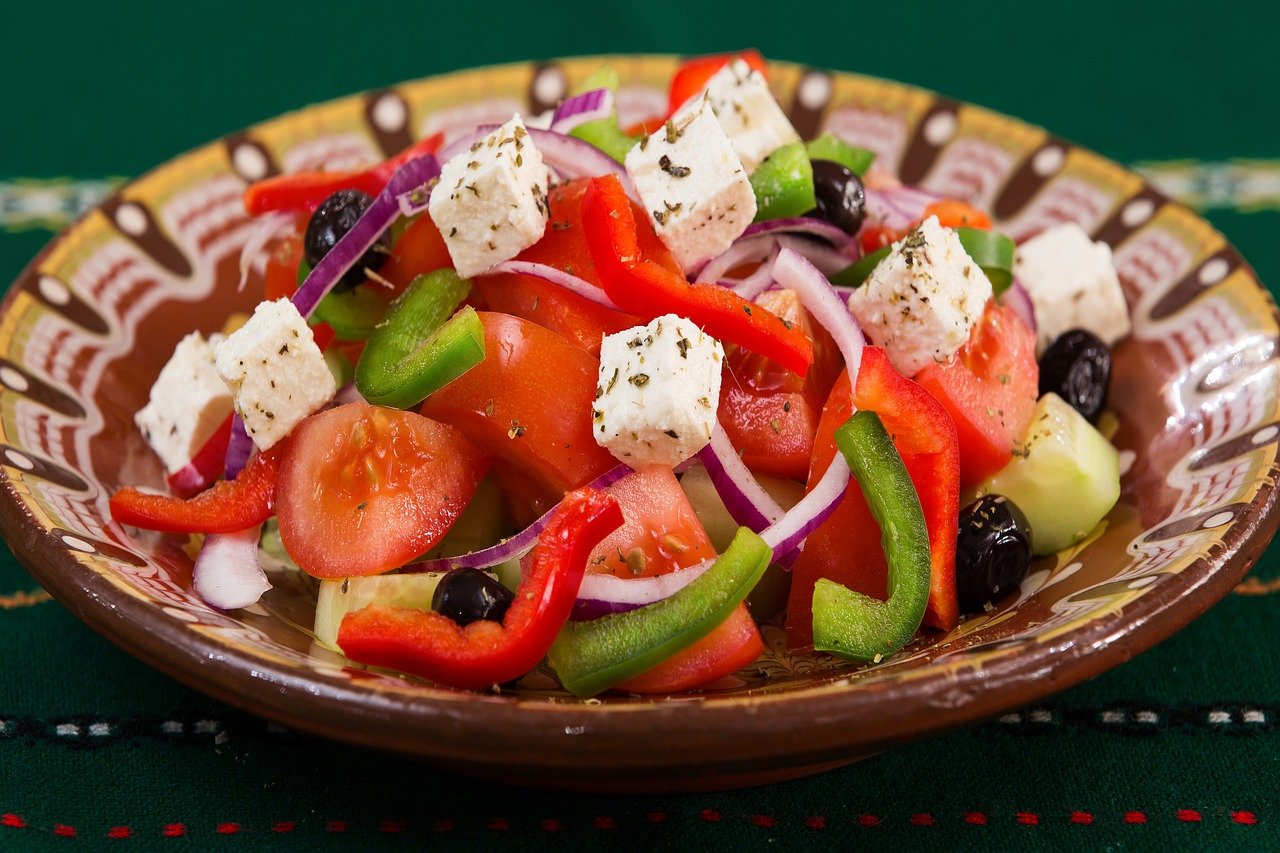
Plan your meals
I actually don’t know how anyone manages to feed themselves without a meal plan any more – I simply can’t imagine how you could possibly make sure that you have enough foods to make dinner if you don’t think about what you’re having! But I also know that that’s exactly what I used to do!
Once you get into the habit of meal planning and get a system that works for you, it makes life so much easier! You know what you’re having for dinner, so that evening ritual of trying to figure it out is gone, and you’re much more likely to plan in something healthy if you’re thinking about it in advance, rather than ‘what do I want to eat right now?’. That’s a dangerous question!
Watch out for a full post on this, but for now here’s what I do:
- Have a list of some healthy, go to recipes and make sure that they include a reasonable amount of veg. There are always ways to add veg to a meal, but it a side salad, grating carrots or courgettes in, adding peas or serving with a side of broccoli.
- Each week check whether there are any odd days that need special thought, and then pick some of your go to recipes to fill half the week.
- Aim to have oily fish a couple of times a week and try to limit your other meats.
- Have a look through your favourite cookbooks – sometimes it takes a while to find some really good ones – I’ve got a nice collection now that I know I can flick through and choose pretty much anything as they’re all good and healthy. Pick one or two new meals which will let you all try something new.
- Look at the ingredients of what you’ve chosen (make your shopping list at the same time). Is there anything that is going to be left unfinished i.e. half a block of feta cheese?
- Google recipes with that leftover ingredient and fill your other spots.
- Next, I check the shopping list for the fruit and veg that I know will only last for a couple of days. If I can I put these meals in the first few days of the week, then I get everything in one shopping trip. When there are too many (normally the case), I split the meals into two halves of the week and I buy the veg for the second half of the week in a second shop (at a more local store rather than another trip to the supermarket!)
A couple of other tips
If your schedule is often changing, leave a day or two without firm plans, but have a couple of ‘cupboard’ meals available at all times. Things like chopped tomatoes, with your favourite type of beans and some frozen veg can be combined with rice or pasta for an emergency dinner.
Or, if you always end up with leftover veg or bits of leftover meals that they kids haven’t eaten, get in the habit of making a vegetable curry once a week. A jar of a madras (or your other favourite curry) paste, can of coconut milk and chickpeas can be added to whatever leftover veg and dinners you have. Bulk it up with some other canned or frozen veg, potatoes, onions etc.
Get a new cookbook!
It’s so easy to follow the same recipes, mostly from your head, or to use pre prepared jars and sauces.
But experimenting with new recipes will really broaden the range and make dinners a lot more exciting. Ideally, find a book that has tasty recipes in it that also contains a lot of veg. I love Ella (Deliciously Ella) and Joe Wicks (Lean in 15) for some inspiration, but I change them up a lot as we’re not gluten free and totally vegan like Ella, and Joe’s meals are super tasty, but the recipes are totally bonkers in terms of meat and veg content for the average person.
My online recipes collection is ever expanding so check it out for my favourites. I try to make recipes simple, tasty, veg rich and ideally quick. They may not win prizes for presentation and looks, but they taste great, they’re filling and they’re really good for you.
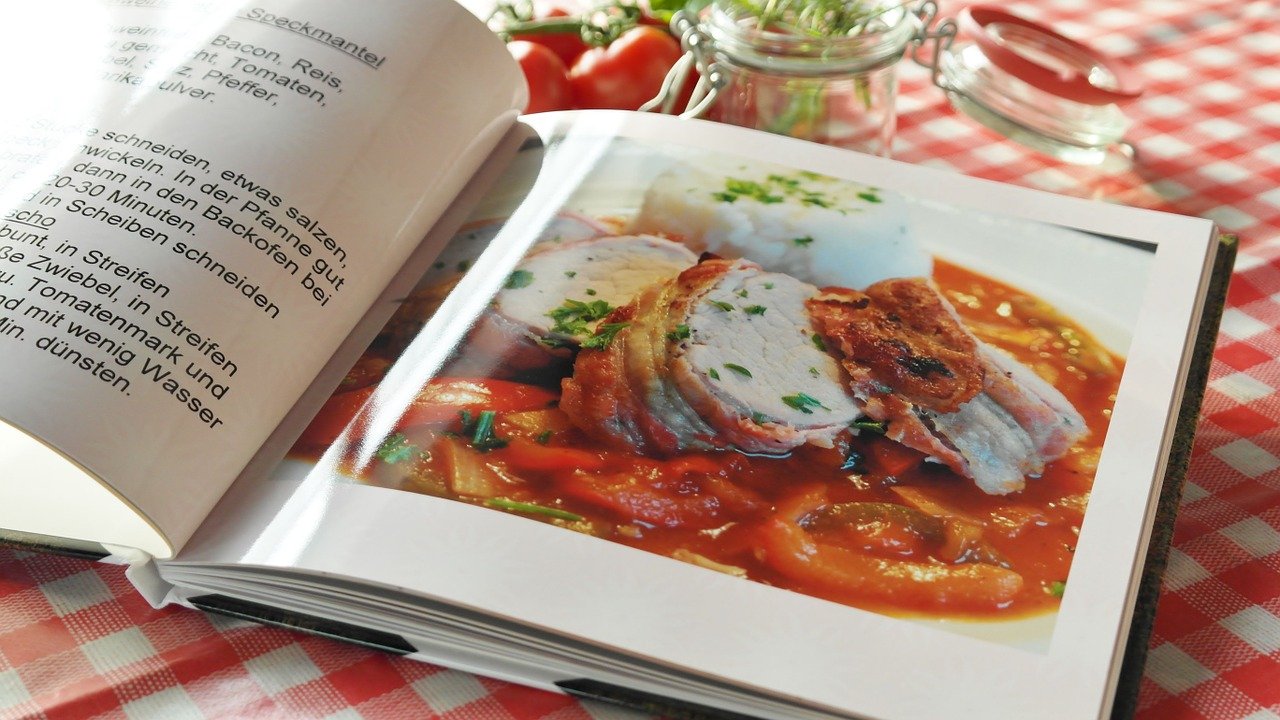
Ways to start eating veg if you don’t like them!
Ok, so many of us have grown up eating few vegetables, our palettes are not broad and possibly there’s a bit more going on there, like my thing with textures that I had growing up.
If we keep eating like this then we’re on the road to poor health and are likely filling up with packaged, processed foods which are simply not sustainable for the planet.
So how do we change? With difficulty! Probably not what you wanted to hear, but of course it’s not going to be a piece of cake or you’d have done it already!
I did it though, moving from eating barely any vegetables (broccoli, carrots, peas and sweetcorn were my accepted veg) to loving pretty much all veg – I’ll try it all and have even eaten crickets now that I’ve discovered how many delicious foods are out there! How did I do it? It took me a while but here are some of the ways I did it…
Get properly motivated
You need to really know why you’re eating the veg. Look into what happens when you don’t, scare yourself into it! Or find someone else worth changing for. I started eating veg for my kids in the end – I knew I wanted them to eat healthy foods and not feel stress around food and meals like I had.
Here are a few things to get you started…
Fruits and vegetables are the main sources of vitamins and phytonutrients in our diets and contain a lot of minerals too. Without these, your body simply cannot function properly as they play a part in many of the chemical reactions that go on inside our bodies. Whilst it may not always be obvious when we’re missing them, our modern processed diets mean that many of us are deficient, especially as our soils are degrading and the fruit and veg we do eat contains less of these vital nutrients than 20 years ago ☹.
When things go wrong they can go really wrong, and a lack of vitamins and minerals has been linked to cancer and other chronic diseases.
Heart disease, diabetes, strokes and cancers all reduce in a diet containing more fruit and vegetables.
Eating more vegetables is also linked to weight loss, as they are very filling for the calorie value. Compare 300g of broccoli to half of a doughnut for example.
You could think of it like this, if you walk in the middle of the road you should be fine, but a car might hit you. On the pavement/sidewalk you’re safe. Do you walk down the middle of the road? Of course not! So why do you not eat vegetables??
I know what you’re going to say – because you don’t like them! Well it’s time for that to change…

Try different cooking methods
Over-boiled veg are pretty squishy and bland. If that’s how you’ve eaten veg in the past, you probably don’t like them!
There are many ways to cook veg, and they often taste different and have different textures when they’re cooked in different ways. Try steamed, roasted (my favourite!), steam fried, and even raw. Find one you like (or can at least tolerate for now).
Make them really small
Grate or slice the vegetables up really small, especially if you have a thing with textures. This really helped me – I used to make the kids dinners with the smallest pieces of mushroom and courgette I could possibly chop as I really didn’t like them. Once they were that small and in a strong flavoured sauce or doused in tomato, it really was hard to know what I was eating.
I gradually increased the sizes over time as I got over it. The kids never complained once!
Eat quality fruit and veg
I can’t really comment on this as I didn’t eat fruit 10 years ago (!), but I’ve heard from a few people that fruit just doesn’t taste as good as it used to. Unfortunately, our fruit crops are bred for yield, appearance, resistance and longevity these days. All things that increase profit but don’t prioritise taste or nutrition content.
Try getting your fruits and vegetables from quality local sources and eat seasonal. They’ll taste better so you’ll have a better chance of enjoying them. As an example – how much better does a strawberry fresh off the plant in the summer (or even in punnets in the summer from UK farms) taste compared to the poor excuses that we’re sold in the winter in supermarkets?
Use flavours to hide the taste
Get friendly with your spice rack.
Again, plain boiled veg are tasteless, but vegetables cooked in garlic, thrown into a curry or in a smoked paprika and tomato sauce don’t really taste like vegetables! A vegetable stock can also really change the flavour of a vegetable like cauliflower, which happily absorbs the flavour.
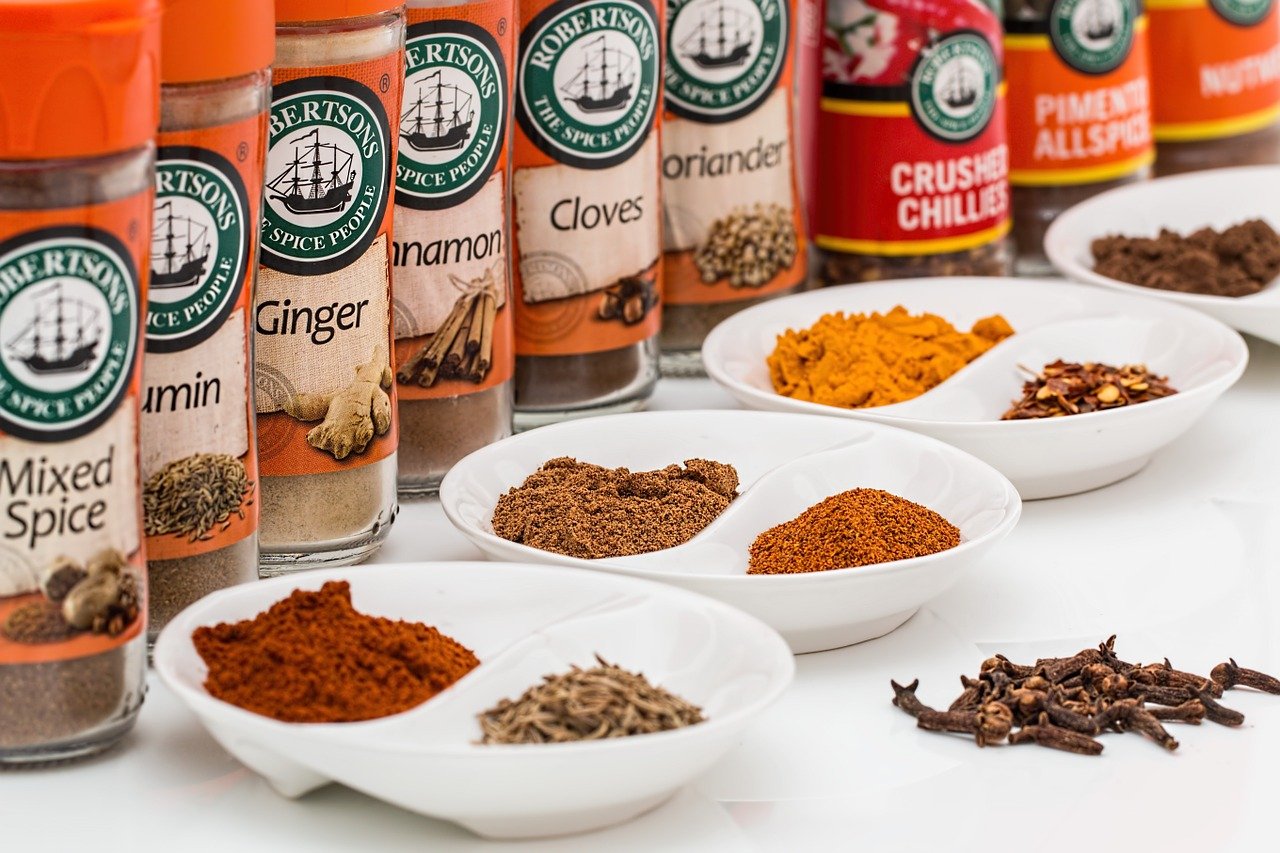
Keep trying them
Whilst we don’t have the extra dislike of bitter tastes built into kids (we lose those taste buds as adults!), we are still like kids, we have to try some foods many times over before we start to like or even tolerate them. Just because you try something once, doesn’t mean you won’t get to like it. Who liked their first mouthful or wine or beer? They’re ‘acquired tastes’ i.e. you learn to love them. The same happens with vegetables if you keep trying them.
Cook according to your preference
Whilst vegetables are usually better with less cooking (they retain more nutrients), the crunchy texture can be alien if you’re not used to them. It can be too much. So make them soft initially so that you can start eating them, then gradually reduce the cooking time.
Some people hate the squishiness of cooked veg though, in which case, try gently steaming, or adding to the pan later than the recipe suggests to keep some bite.
As vegetables can be eaten raw, you can cook them for as long as you like!
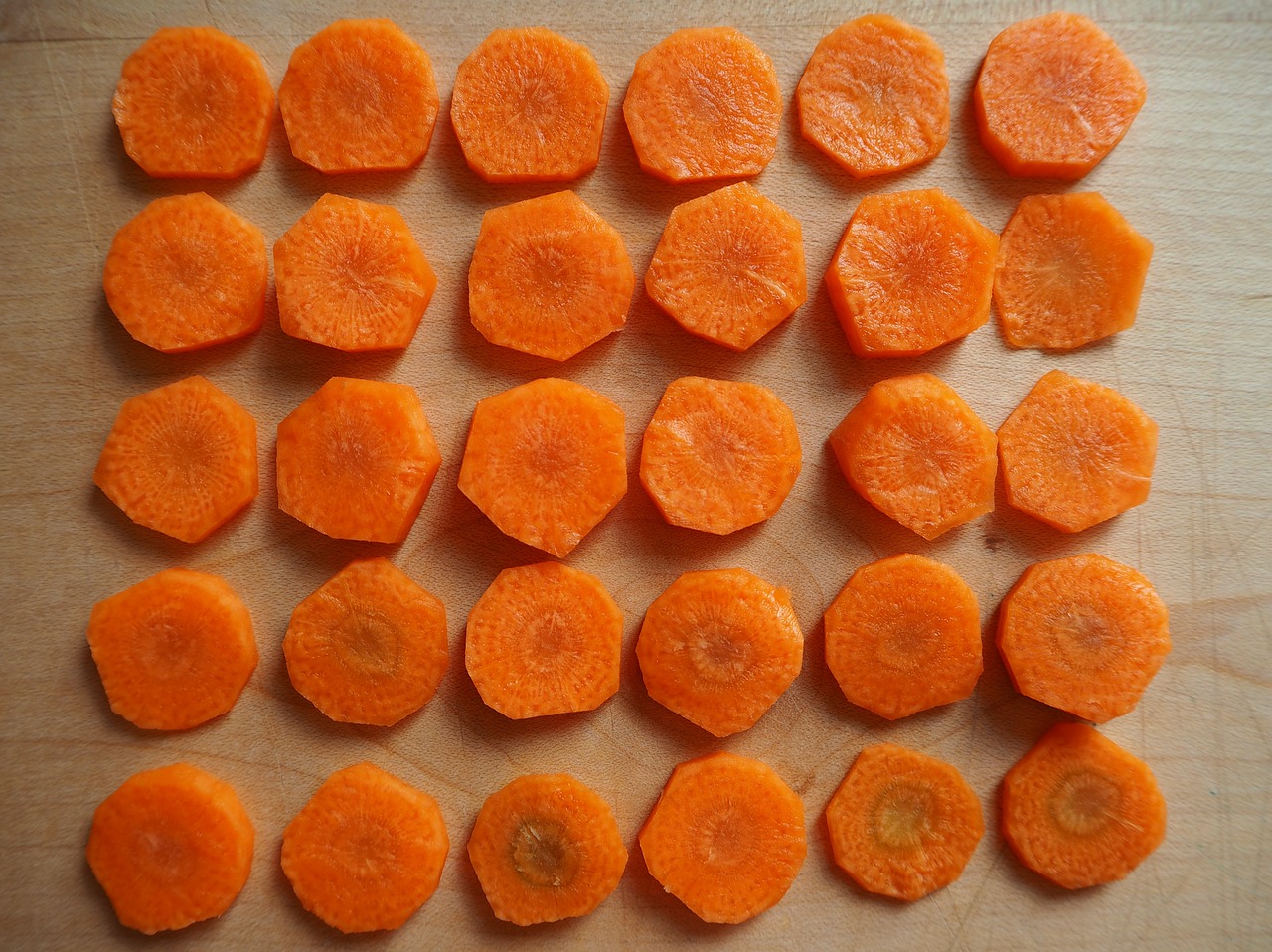
What other barriers are there to eating veg? Let’s bash those too…
Even if you don’t personally hate veg, it can still be hard to fit them in and feed them to everyone…
Fussy family
A lot of people don’t cook with vegetables, or stick to the same ones as their children (or partners!) won’t eat them.
This is difficult but can be overcome with patience and an understanding of why they are refusing them.
Fussy kids
I’ve written a whole separate post about getting kids to eat veg which looks at the psychology of why they’re being fussy and how to get around it – read it here if this is an issue for you…
Fussy partner
If it’s your partner or other person that you’re cooking for that doesn’t like them then you need to try to persuade them to come on this journey with you and be supportive.
Show them what you’ve seen that’s inspired you to make a change. Talk about the health of your children, or of each other. Ask outright for their support as you want to overcome your health conditions and be healthy in the future.
You’ll know your partner better in terms of how they make decisions and what they need to see to make a change (emotive or factual, self-led or convinced etc). If they can also understand the importance and get on board, you’ll have a much better chance at succeeding together…
Take the family challenge
If it’s not just the kids who are fussy, but a couple of the adults too, make it a family challenge. Try getting one new veg a week, just enough to allow you each a couple of pieces rather than a whole meal of it. That way if someone really doesn’t like it they can pick it out and continue with dinner and your waste will be low.
The aim here is to get everyone to try some. By doing it together, the kids are more likely to join you. Try not to react with it being disgusting! Hold back thoughts until everyone has tried it and then you can talk about what you liked and didn’t like about it. This can help you understand whether it might be cooking method (if it was too crunchy or slimy) or the taste itself.
Reward them / heap on the praise for trying it (properly – licking doesn’t count!) but don’t force anyone to eat all of it if they really don’t like it.
Even if the veg didn’t go down well, try it again in a few weeks as it can take a lot (20!!) tries to get to like a new flavour…
You can even get creative and make charts and a plan – have a star scoring system for how much each person liked it so you can see if it’s scored better than last time i.e. gone from totally gross to not very nice, to bearable.
It works!
I can vouch that continuously presenting really does work – my daughter didn’t like butternut squash for years, but we kept asking her to try it every time we ate some. She went from really not liking it, to suddenly one day realising that she enjoyed it. Now she asks for our butternut squash and chilli chickpea salad!! Once your children can realise themselves that their attitude to a food did change (once they can remember not liking it and suddenly realise that they do now), they’ll be much more open to trying new things repeatedly.

It takes too long to prep them
Ok, so I can’t argue with this one, veg does take time to cut up, and I can’t advocate buying the ready chopped stuff in bags. But there are a few things you can do to help this…
- Reduce the meat in your meal to reduce the overall cooking time (and make it more eco-friendly).
- Roasting veg allows you to leave the veg in bigger pieces, chuck it in the oven and walk away, which is nice.
- Get the family involved. A couple of people going at the veg really speeds the whole thing up and you can chat about your day whilst you do it. Getting the kids involved in veg prep is also a good way to help them get more familiar with different vegetables.
- Another way to make use of this time is to put some music on and have a little kitchen boogie – great for the spirits. Make this some you time and maybe even help yourself to a glass of wine…
- Roasted vegetables will last for a few days in the fridge, so roast a big batch when you have more time at the weekends and they’ll be easy to reheat for a quick dinner in the week.
- If you buy organic veg from local sources, things like carrots and potatoes don’t need peeling which can save you time. A quick scrub to remove soil and you can get chopping 😊
- Get some good knives! Sharp knives can make the whole chopping process much quicker!
You think vegetables are more expensive
I’d definitely challenge this. Seasonal veg from the supermarkets can be incredibly cheap, you can get a massive bag of carrots for £1! Non seasonal fruits in particular are very expensive, like strawberries in winter.
I would also agree that locally grown produce from farmers markets and farm shops and organic fruits and veg are more expensive than their supermarket versions, but they will pack more of a vitamin and mineral punch and are a far superior product most of the time (in flavour and nutrients, not necessarily in looks!)
Get to know which vegetables are locally grown and will be available during different months in your local supermarket and build this into your meal planning.
Make the most of your veg money by aiming to get a mix of colours every day, this way you’ll be more sure that you’re getting some of all the different types as they tend to associate themselves with colour (foods high in vitamin C are often orange for example, and green leafy veg are usually high in vitamins A, C and K.
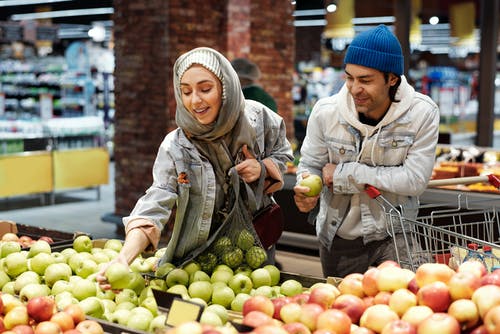
- Vegetables don’t last long and they always go off
Some vegetables do go off really fast, especially salad items like lettuce and spinach. Others will last for a while, but they are generally better when eaten fresh as some of the nutrients are lost as vegetables age.
To be sure to be eating enough fruits and veg, it’s really important to have a meal plan for the week. I know people really hate this, but it’s just another habit to pick up. With the correct method and tools it can become a relatively simple weekly task. There are also ways to get them done for you if you really, really can’t get to grips with this yourself.
Read the meal planning section above for tips…
There are never any in the fridge…
Ultimately, if you don’t plan to eat fruit and vegetables, then you’re not going to eat them. Because a lot of recipes are very low on vegetables, unless you consciously think about what vegetables you are going to eat that week, you’ll end up eating very few.
Take some time to think about what you’re eating and what fruit and vegetables you can fit in.
If the recipe you’re planning to make has few veg, adding a couple more portions in will massively bulk it up, so you may need to cut down on some other ingredients. I’d suggest the meat and/or carbohydrate elements.
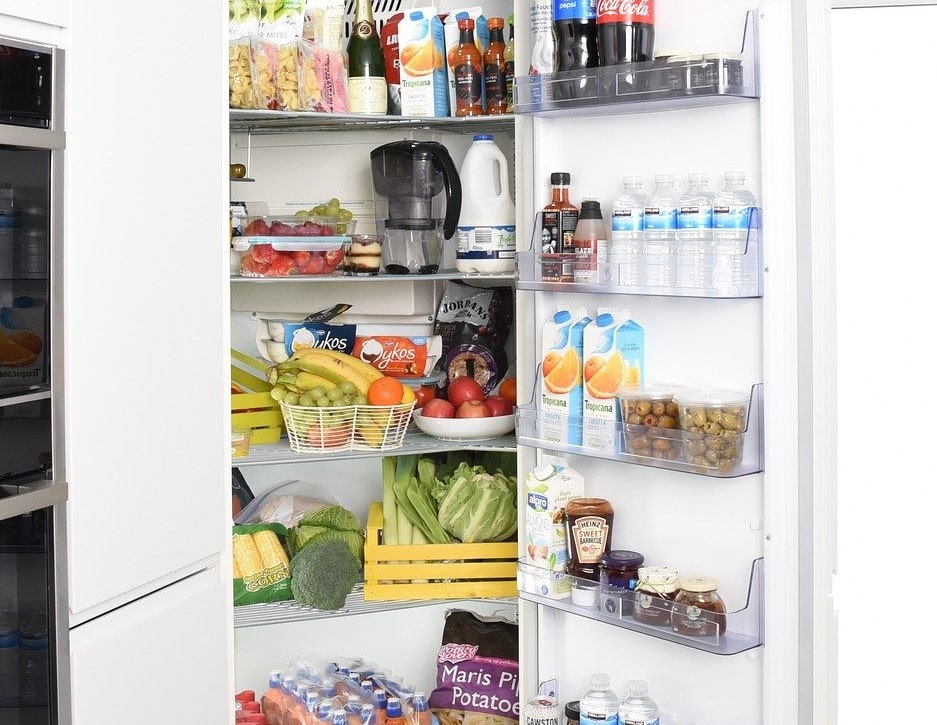
You’re stuck in a rut of the same meals
It’s so easy to always end up with the same meals. They come to mind quickly when you’re at the shops or planning, you know how to cook them and you know they’ll go down well with the family.
My advice would be to see whether there are ways to up the veg with these staples. Ideas here…
Then try finding a source of alternatives to change it up once or twice a week initially. Put these in on nights where you’re a little less stressed when cooking so that you can get to grips with the new recipes.
Hopefully there are at least a few things you can take from this which will enable you to move forward on your journey to achieving 10 portions of fruit and veg a day.
If you want to join a community of people who are all trying to move to a more eco-friendly way of eating together so you can ask questions about this and get more tips come check out my Facebook Community… Click here

